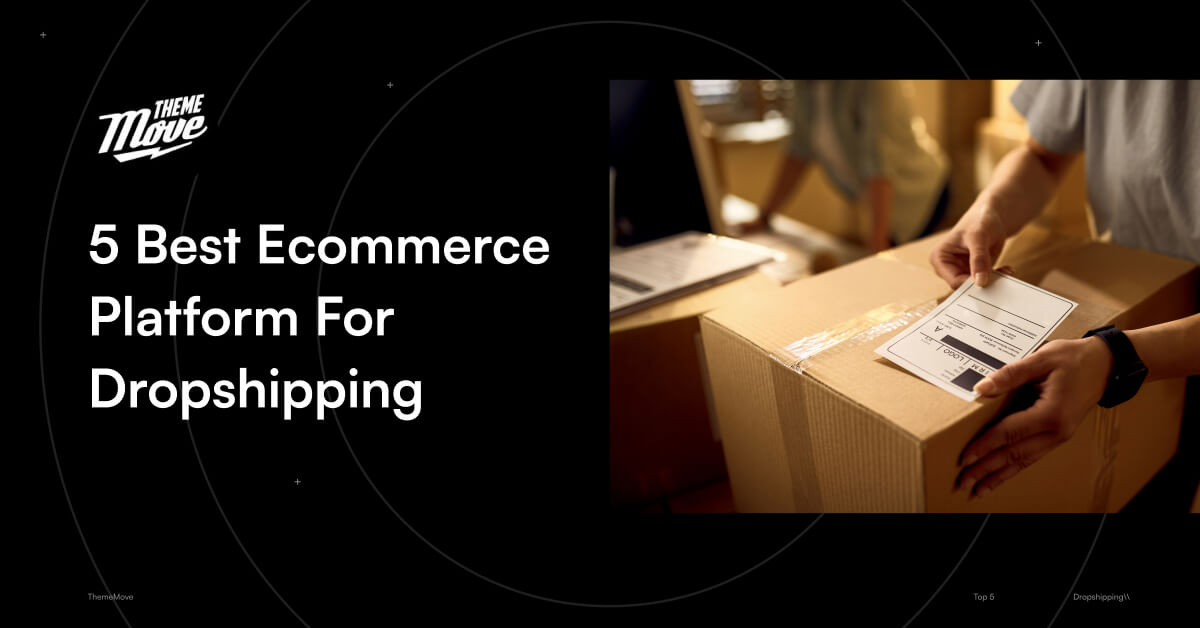If you’re thinking of starting your dropshipping business in 2024 but feel unsure of where to begin, you’ve come to the right place. With the dawn of a new year on the horizon, now is an ideal time to plan your eCommerce strategy, starting with choosing the best eCommerce platforms.
In this growing digital era, eCommerce platforms continue developing powerful new features focused on streamlining the business process from start to finish. Integrations with fulfillment centers, simplified shipping calculations, and robust product feeds are just a few examples of innovations aiming to make life easier for entrepreneurs. Selecting the most feature-rich platform for your specific goals and budget will help set the stage for your future success.
In this blog post, we’ll explore 5 top best eCommerce platforms that are perfectly suited for launching a successful dropshipping store in 2024.
How to Start Dropshipping?
Dropshipping refers to a supply chain model where retailers do not keep goods in stock themselves. Instead, they fulfill orders by purchasing the product from a third-party supplier or manufacturer and having it shipped directly to the customers. This allows entrepreneurs to sell online without shouldering the expensive burden of maintaining their own warehouse or shipping infrastructure. All that’s needed is a website and connections to reliable suppliers.
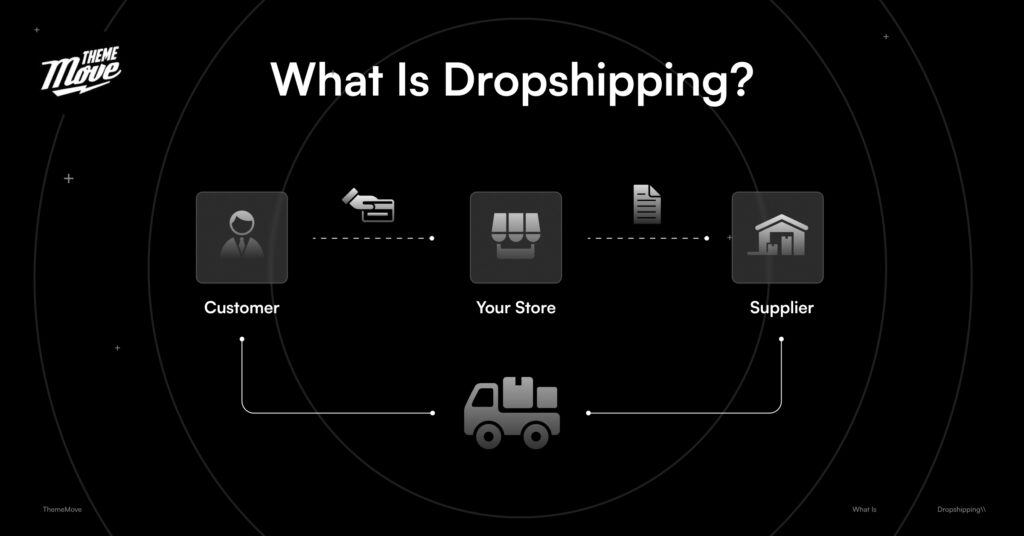
There has never been a better time to launch a dropshipping business than the start of 2024, given that 24% of retail purchases are expected to take place online by 2026. Ecommerce continues to grow at an astonishing rate as more shoppers adopt online buying habits. This expanding digital marketplace represents a huge opportunity for new merchants.
Additionally, eCommerce platforms have made tremendous progress in strengthening fulfillment tools to streamline the process. Features like one-click ordering, seamless inventory syncing, and shipping notifications save sellers loads of workload. With dropshipping, you can capitalize on these tailwinds of growth without huge upfront investment – simply your time, ideas, and hard work.
Dropshipping is a challenging task that revolves around 2 factors: finding the win products and choosing the best eCommerce platform to sell them.
While finding the winning products can take some time and effort, choosing the best eCommerce platform should be much easier.
Criteria for Selecting the Best eCommerce Platforms to Start Dropshipping
1. It should be cost-effective
When first starting with dropshipping, resource allocation is critical. Most of your budget should be spent on marketing, products, and making improvements constantly – not recurring platform fees. Look for monthly or transaction-based plans without long-term contracts. Check fee structures carefully, as some “free” plans have hidden expenses that can become obstacles over time.
2. It should be scalable
As a beginner, nobody expects your store to become an enterprise overnight. However, planning for growth is important for dropshipping businesses. Look for the best dropshipping websites with tiered pricing for small business usage while accommodating larger volumes down the line. Advanced features like AI optimization, integrations, and multichannel capabilities indicate a technology built for expansion as your customer base increases.
3. It should support dropshipping characters
Nowadays, any eCommerce platform can link with multiple integrations in various categories. Your dropshipping websites should be able to connect with multiple integrations in dropshipping, marketing, and analytics. According to Inventory Source, key aspects of a dropshipping store include tightly integrated catalog management, inventory and pricing automation, marketing and analytics tools, and shipping notifications. Apps that seamlessly sync orders and inventory in real time are necessary. Consider platforms with robust APIs for custom development if default features fall short.
4. It should have excellent support
Whether you are a beginner or an experienced eCommerce player, you’ll have a fair share of beginner’s questions. Look for the best dropshipping websites renowned for friendly, knowledgeable representatives available via call, chat, and community support. Comprehensive documentation libraries and how-to guides can also help you troubleshoot problems independently, speeding up the resolution time.
Top 5 Best eCommerce Platforms for Dropshipping Businesses
1. WooCommerce by WordPress
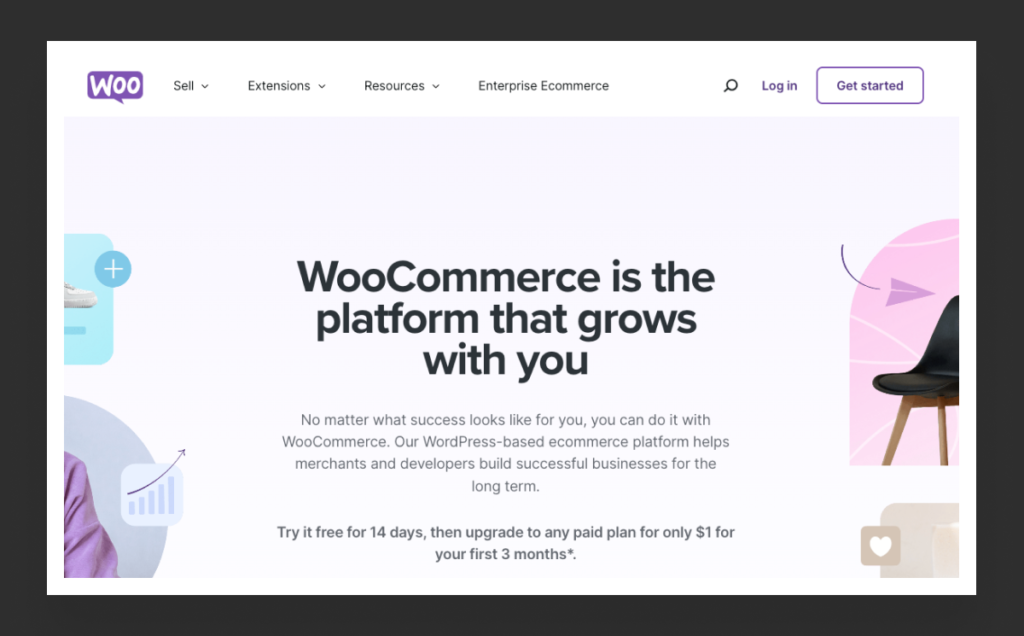
| Pricing | Key features | Pros | Cons | Best for |
| Free and open-source platform, but requires paid themes/ plugins. | – Highly customizable interface, SEO-friendly URLs, responsive design. – Integrations with 50+ payment gateways and shipping carriers. |
– Large library of extensions like analytics and inventory management apps. – Robust developer community offers solutions for any need. |
– More technical skills are required to use compared to others. – Frequently overloaded support volume, leading to slower responses. |
– Smaller niche stores and customizable complex shops that need advanced functionality. – Experienced business owners. |
If you want to create a functional dropshipping store that meets your needs, WooCommerce (or Woo) by WordPress is the perfect choice for you. While WordPress is the most popular CMS platform in the world, WooCommerce is a powerful plugin that turns your WordPress website into an online store. It lets you customize your dropshipping websites in any way you want.
You can choose from thousands of themes and plugins to enhance your site’s functionality and appearance. Furthermore, Woo allows you to manage your product catalog, orders, payments, and shipping in a wide range of products from different niches and categories.
However, WooCommerce is not for everyone.
Even though Woo empowers users to set up their dropshipping website effortlessly, it’s still a plugin of WordPress, so you need some technical skills and knowledge to set up and maintain your website. You also need to pay for hosting, domain name, and some premium plugins and themes if you want to access advanced tools. WooCommerce is not a cheap option, but it’s worth it if you value flexibility and control.
2. Shopify
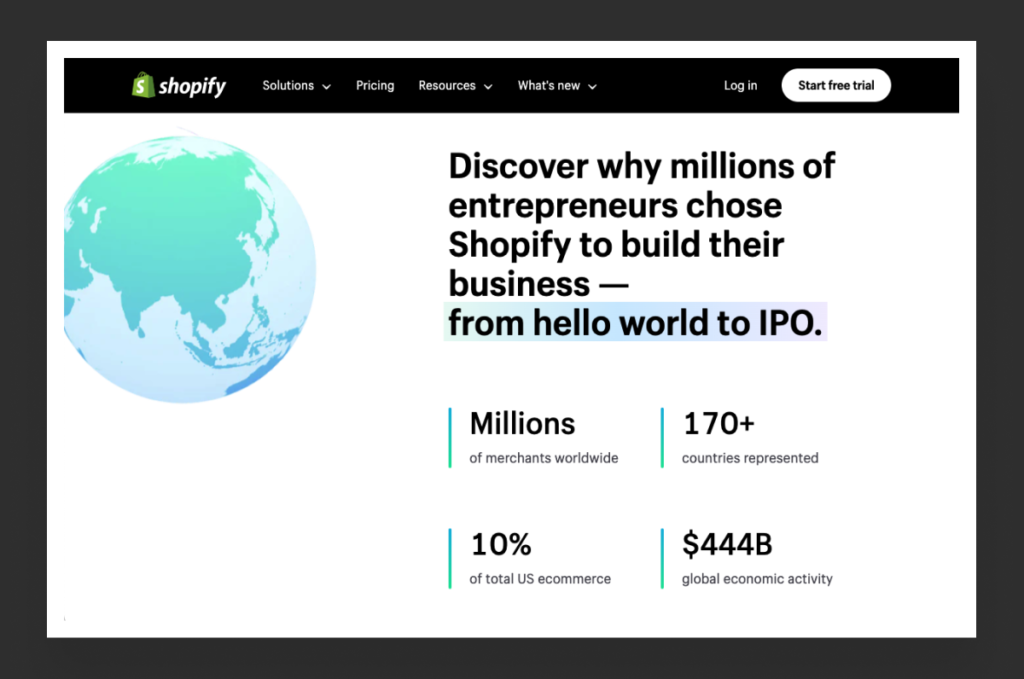
| Pricing | Key features | Pros | Cons | Best for |
| Starting from $29/month for basic plan with rising tiers adding more advanced features. | – Robust analytics, multi-channel selling on social platforms, built-in POS and financing. – AI-powered native mobile shopping app. |
– Huge selection of premium themes and apps specifically made for eCommerce. – Shopify can grow with your business from start to giant. |
– Limited flexibility and customization power. – 24/7 instant AI-backed support chatbot – Email support replies within 24-48 hours. |
– Smaller niche stores and customizable complex shops that need advanced functionality. – Experienced business owners. |
Shopify is an industry-leading all-in-one commerce platform providing comprehensive tools and onboarding guides. Shopify’s integrated solutions put complex commerce capabilities in easy reach for new entrepreneurs. It creates an ideal starting point for scaled dropshipping stores.
Shopify offers everything you need to launch and grow your dropshipping stores, from an intuitive interface to powerful marketing and sales features. You can easily customize your store’s look and feel, add products, manage orders, and track your performance.
Shopify also has a huge advantage when it comes to dropshipping websites. You can automate your order workflows, manage your suppliers and inventory, and integrate with shipping services. Shopify has built-in apps that handle sourcing, tax, and logistics for you. You don’t have to worry about the technical details of running dropshipping stores. Overall, Shopify is the best-supported dropshipping platform in the industry.
If you want to start your business from scratch with Shopify, get the sweet deal by Shopify of “$1 for 3 months” with a bundle of Shopify starting and growing tools from our strategic partner FoxEcom, all of them will be discounted for 15% lifetime.

FoxKit: All in one Sales Boost
Megamog: The Best Shopify theme for high volume store
Once you’ve successfully signed up on Shopify, drop an email at happytohelp@foxecom.com to receive the sales bundles from FoxEcom team.
Remember to include a line: I signed up Shopify through ThemeMove’s reference and want to receive the discount bundle of FoxEcom products.
3. Wix
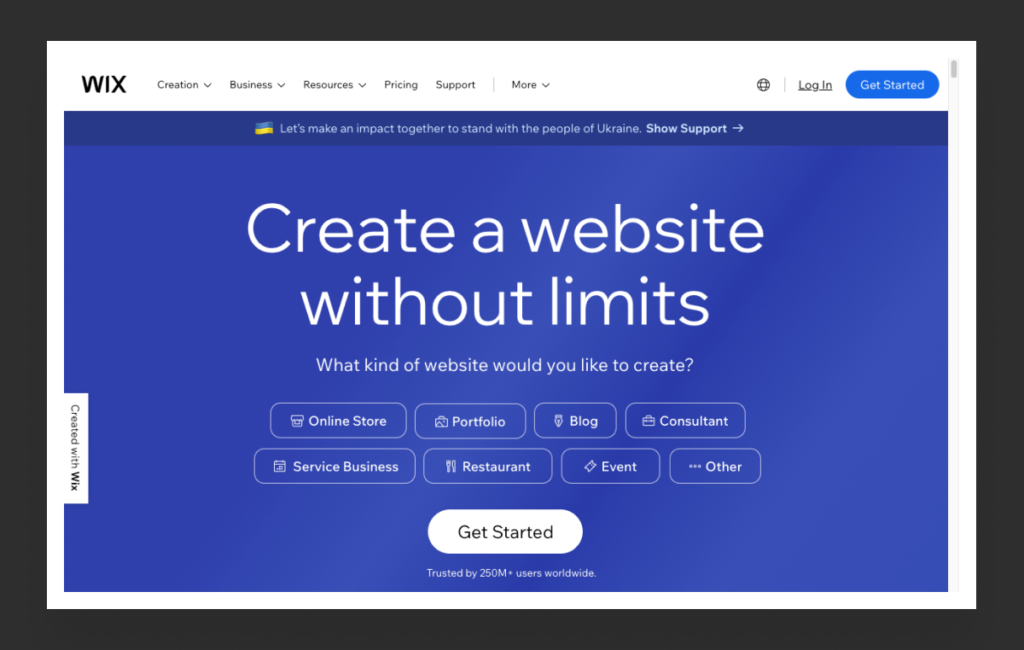
| Pricing | Key features | Pros | Cons | Best for |
| Start at $14 per month and offer more storage, bandwidth, and other features. | An all-in-one website builder that offers hundreds of templates, a drag-and-drop editor, and a range of features such as SEO tools, e-commerce functionality, and social media integration. | – Easy to use, even for beginners with no coding experience. – A super wide range of templates and features. |
– Slower loading times in comparison with other eCommerce platform. – Hard to scale up to a large store given the limitations of eCommerce built-in. |
Small business owners who want to create a good-looking website flexibly without any coding. |
Wix is an all-in-one website builder that offers a wide range of features and templates to help you create stunning dropshipping websites. Its drag-and-drop editor makes it easy to build a website from scratch, and it also offers various features such as SEO tools, order tracker, payment gateways, store management tools, and social media integration.
Wix’s strengths include its ease of use, wide range of templates and features, and its free plan.
Its shortcomings lie in its limited storage and bandwidth in the free plan, as well as slow loading times and limited customization options. Overall, Wix is a great choice for anyone who wants to create beautiful dropshipping websites quickly without any coding experience.
4. Squarespace
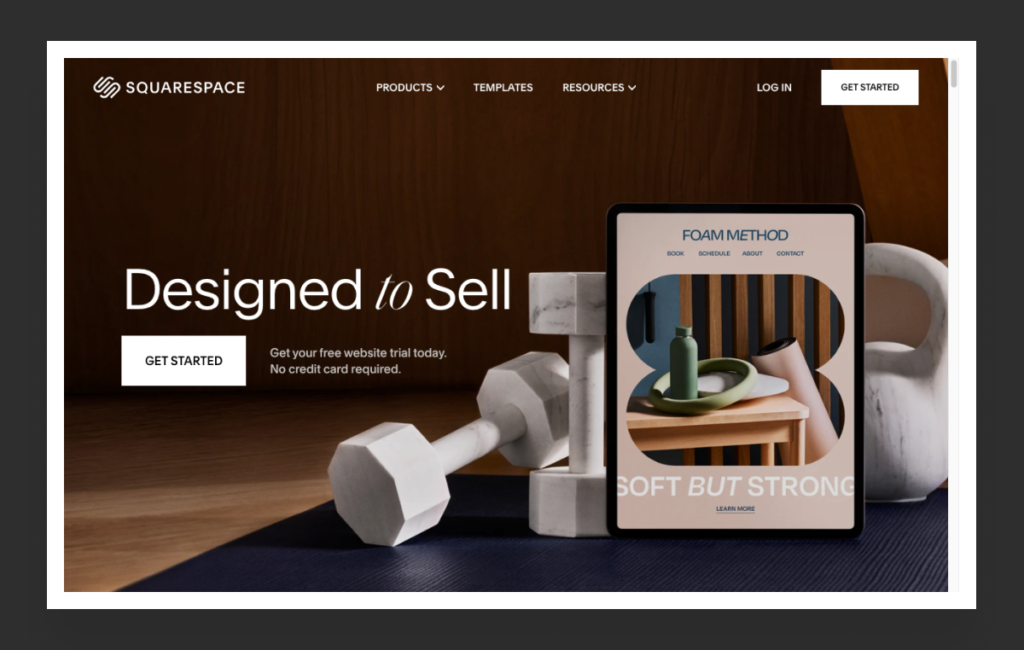
| Pricing | Key features | Pros | Cons | Best for |
| Starting at $12/month for basic plan, with highest tier at $40 including enhanced eCommerce tools. | Beautiful designer-made templates, optimized site speed, social media integrations, analytics, and basic SEO are included in all plans. | – Simple to use drag-and-drop interface builds professional sites quickly. – Strong focus on aesthetics. |
– Less functionality than other eCommerce platforms. – Hard to manage large catalogs or complex products. – Limited built-in marketing tools. |
– New online merchants focused on self-expression through gorgeously designed storefronts. – Creators selling minimal items like apparel. |
Squarespace is a top choice for creating a stunning look for your dropshipping stores, but it lacks advanced eCommerce tools, which limits growth potential. While Squarespace can technically host dropshipping stores, its underdeveloped eCommerce tools require you to do more manual work.
Squarespace stands out most for personal expression but has some downsides for maximizing larger and long-term dropshipping operations. Still, its polished look and feel may make it worthwhile for the right niche.
5. Adobe Commerce (Formerly Magento)

| Pricing | Key features | Pros | Cons | Best for |
| Unpublic pricing. Each business will receive a custom quote based on their need. | – Drag-and-drop page builder. – Strong SEO tools. – Diverse integrations with third-party services. |
– Wide range of features and integrations for dropshipping. – Highly customizable and scalable to store needs. – 24/7 real-time support. |
– High price, not affordable for small businesses. – Complex, requires technical expertise to use. |
Medium-sized and enterprise-level businesses that require a highly customizable eCommerce platform. |
Adobe Commerce is a powerful eCommerce platform that offers a range of features and integrations for dropshipping websites. It’s highly customizable and can be tailored to meet the needs of your business. Adobe Commerce also offers a range of SEO tools to help you optimize your dropshipping websites for search engines.
Regarding dropshipping, Adobe Commerce is a suitable platform for creating dropshipping websites, but it requires some technical expertise to set up. You’ll need to integrate your dropshipping stores with a third-party dropshipping service, which can be complex. However, Adobe Commerce’s range of integrations and customization options make it a good choice for businesses that want to offer dropshipping services.
Choose the Right eCommerce platform And Start Dropshipping
By now you’ve gained valuable insights into the strengths and limitations of various best ecommerce platforms. To recap, Shopify, WordPress, and Wix provide the most robust feature sets fitting a variety of dropshipping needs and budgets.
When selecting your platform, focus on considering your goals – do you want streamlined processes or full customization? Your skills – how comfortable are you with technology? And financial resources – what’s your monthly hosting budget? Understanding limitations and requirements at the onset leads to the best long-term choice.
Most importantly, remember that any platform can succeed with the right product, marketing savvy, and perseverance. Your dedication to continuously learning tactics, adjusting strategy, and providing excellent customer service will override any technical limitations early on.
We hope this overview has brought you a step closer to launching your exciting new dropshipping stores. With so much opportunity ahead in 2024’s expanding digital markets, don’t delay your dreams any longer. Instead of asking yourself how to start dropshipping, just choose your best eCommerce platform, start small with a curated product selection, and let your creativity take over from there. Soon the satisfaction of your first sale will propel you forward into an inspiring new business journey.

